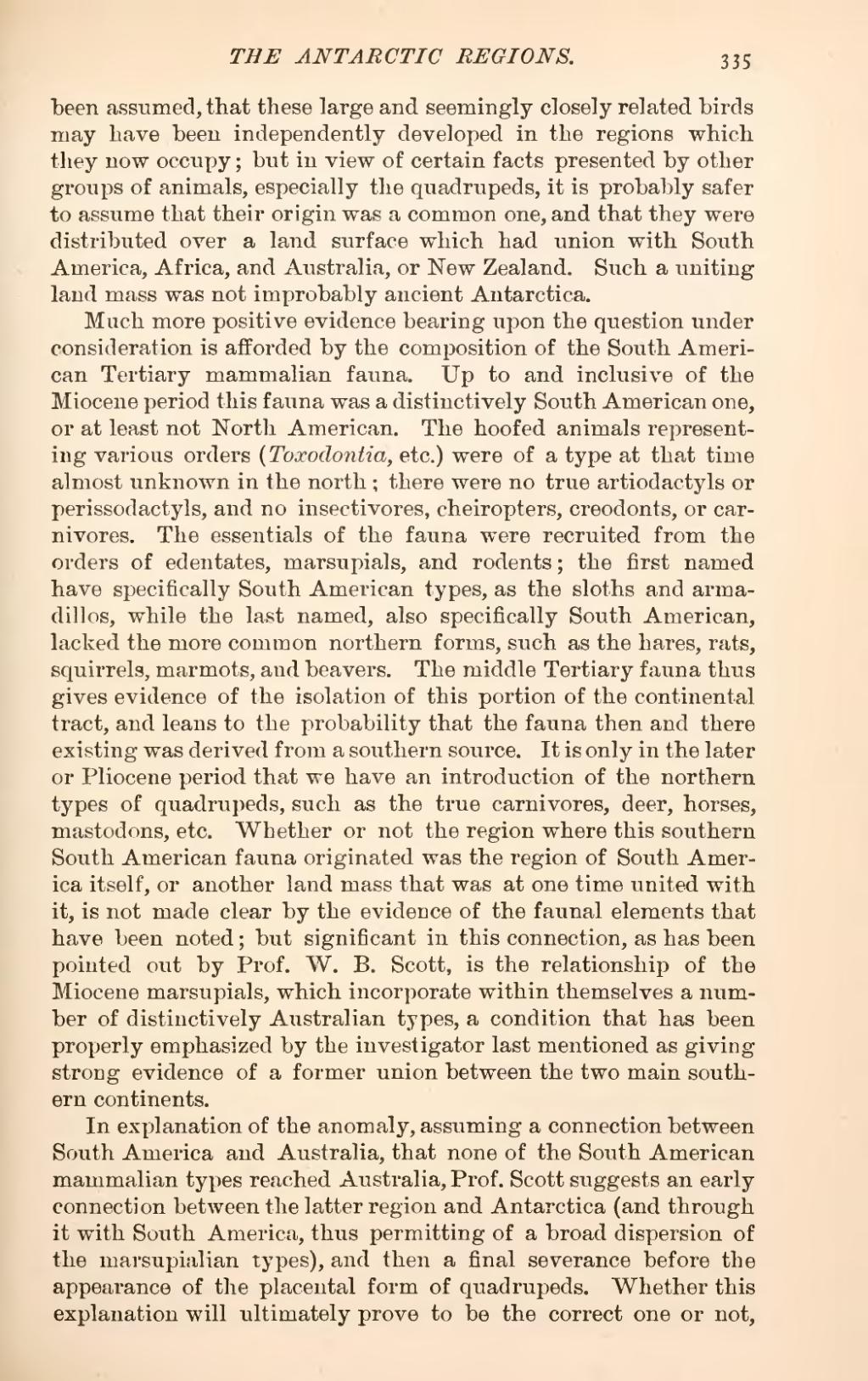been assumed, that these large and seemingly closely related birds may have been independently developed in the regions which they now occupy; but in view of certain facts presented by other groups of animals, especially the quadrupeds, it is probably safer to assume that their origin was a common one, and that they were distributed over a land surface which had union with South America, Africa, and Australia, or New Zealand. Such a uniting land mass was not improbably ancient Antarctica.
Much more positive evidence bearing upon the question under consideration is afforded by the composition of the South American Tertiary mammalian fauna. Up to and inclusive of the Miocene period this fauna was a distinctively South American one, or at least not North American. The hoofed animals representing various orders (Toxodontia, etc.) were of a type at that time almost unknown in the north; there were no true artiodactyls or perissodactyls, and no insectivores, cheiropters, creodonts, or carnivores. The essentials of the fauna were recruited from the orders of edentates, marsupials, and rodents; the first named have specifically South American types, as the sloths and armadillos, while the last named, also specifically South American, lacked the more common northern forms, such as the hares, rats, squirrels, marmots, and beavers. The middle Tertiary fauna thus gives evidence of the isolation of this portion of the continental tract, and leans to the probability that the fauna then and there existing was derived from a southern source. It is only in the later or Pliocene period that we have an introduction of the northern types of quadrupeds, such as the true carnivores, deer, horses, mastodons, etc. Whether or not the region where this southern South American fauna originated was the region of South America itself, or another land mass that was at one time united with it, is not made clear by the evidence of the faunal elements that have been noted; but significant in this connection, as has been pointed out by Prof. W. B. Scott, is the relationship of the Miocene marsupials, which incorporate within themselves a number of distinctively Australian types, a condition that has been properly emphasized by the investigator last mentioned as giving strong evidence of a former union between the two main southern continents.
In explanation of the anomaly, assuming a connection between South America and Australia, that none of the South American mammalian types reached Australia, Prof. Scott suggests an early connection between the latter region and Antarctica (and through it with South America, thus permitting of a broad dispersion of the marsupialian types), and then a final severance before the appearance of the placental form of quadrupeds. Whether this explanation will ultimately prove to be the correct one or not,
